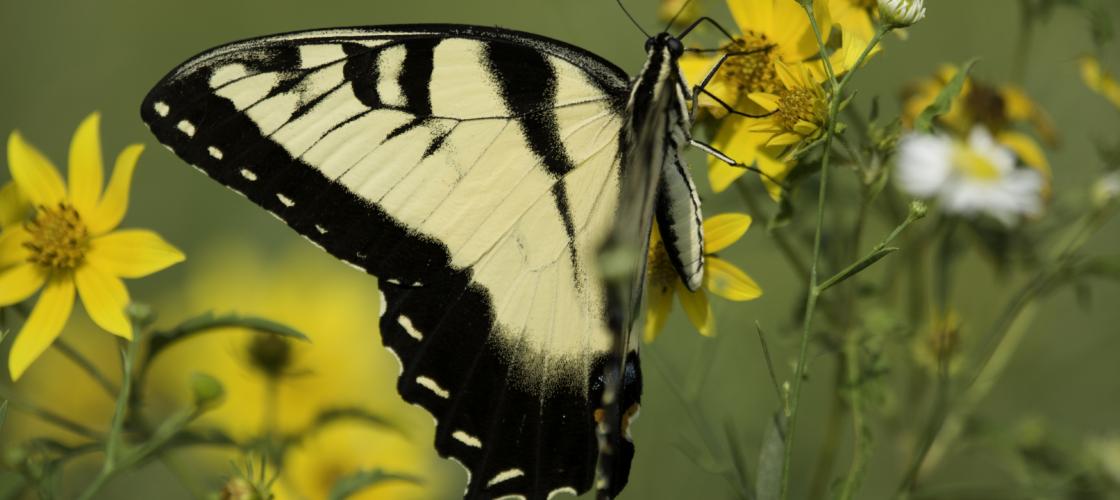Butterfly watching is a popular outdoor activity. Gardeners can do a lot to attract butterflies throughout the growing season.
You can plant flowers to attract butterflies. Flying takes a lot of energy and adult butterflies need a lot to eat! They are drawn to flowers and eat pollen and nectar, which are full of energy-rich sugars and fats.
It's important to provide food for the larval stage of butterflies as well. Sometimes getting the butterflies you want is as easy as growing the plant the larvae feed on. Most butterflies lay their eggs on certain species or families of plants. Monarchs prefer milkweeds. Black swallowtail larvae do well on dill and carrot tops. Fritillaries prefer violet leaves.
Butterfly gardens require gardeners who are willing to share the bounty of green growth as butterfly caterpillars are gluttonous eaters. Even to a generous gardener, however, some larvae are unwelcome. Cutworm caterpillars are particularly destructive and hornworms can whittle tomato plants to stem in short order. If you use pesticides, use them sparingly and only when you have a problem. Pesticides do not discriminate between good insects and bad ones.
A wealth of butterflies indicates the overall well-being of the local ecosystem. Butterflies are a good measure of good gardening.
Material Sourced from former MDC Biologist, Dennis Figg.
The Best Monarch Butterfly Habitat
Tips for creating great monarch butterfly habitat.
- Size: There is no minimum area requirement for your habitat; however, a truly effective habitat will be at least 100 square feet. The total area may be split among several sites at your location and there is no upper limit for the size of a Monarch habitat.
- Exposure: Monarch plants need lots of sun; therefore, habitats need to be located in an area that receives at least six hours of sun a day.
- Drainage and Soil Type: Milkweeds and nectar plants will do best in relatively light (low-clay) soils. Good drainage is needed to avoid root rot and provide good aeration of the roots. Areas with poor drainage may need more tolerant species such a swamp milkweed and New England aster.
- Shelter: To assure that the maximum number of monarchs survive in your habitat, the plants should be relatively close together. However, they should not be crowded – be sure to follow the planting recommendations specific to each plant.
- Food: Include Milkweed Plants and Nectar Plants
For more on monarch butterflies, visit MDC’s website.






Recent Posts
























